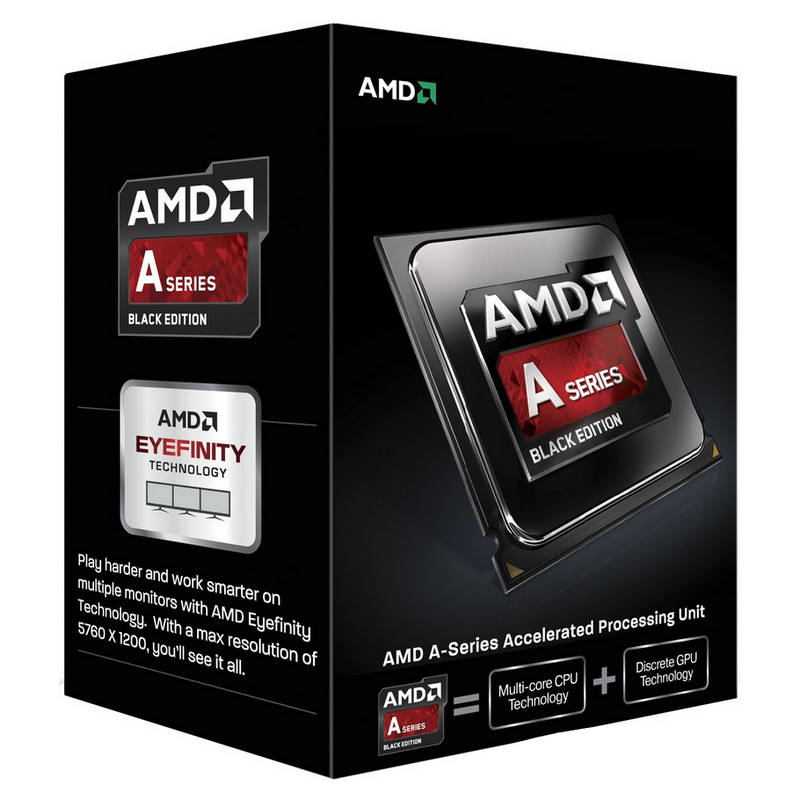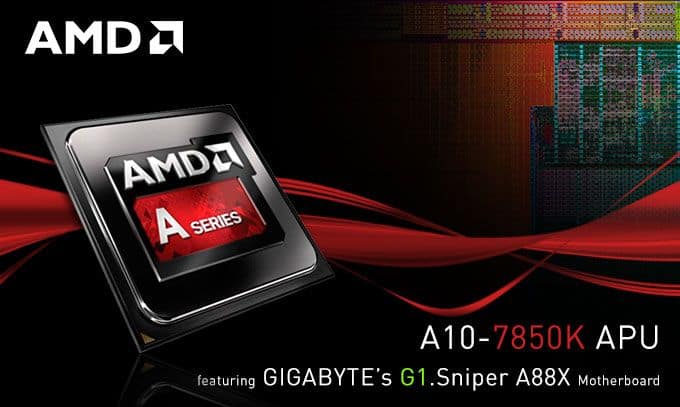amazon AMD APU Kaveri A10-7850K reviews
The APU A10-7850K is the first Kaveri chip manufactured using 28nm SHP technology, the hUMA memory access mechanism based on the composite system architecture, integrated graphics Radeon R7 Graphics Core 1.1
Design
The APU Kaveri is the first generation of microroller architecture based on Steamroller microarchitecture with 28nm (super-high performance) SHP technology, promising better performance than previous generations. Specifically, AMD said that APR Kaveri’s instruction per cycle performance was about 20 percent higher than that of its Piledriver architecture chips.
One of the major improvements to the new generation of desktop APUs is the adoption of heterogeneous Uniform Memory Access (HUMA). This memory access mechanism is based on the Heterogeneous System Architecture (HSA), which allows the CPU and GPU to access and use the entire system memory address, Virtual memory.
The new integrated graphics core, Radeon R7 GCN 1.1 (Graphics Core Next) architecture, also significantly contributes to the improved multi-threading capabilities of the GPU, which can better utilize the graphics processing power with multiple pipelines. At times and negligible effect on overall performance.
The new Kaveri APUs also support the Mantle API for GPUs and the Graphics Core Next APUs. The Mantle programming interface simplifies the game development process by leveraging the shared resources of the Graphics Core Next architecture between personal computers and game consoles. Programmers will not spend much time, effort to optimize the game running on many different platforms.
Performance
Test Lab tests and compares the performance of the A10-7850K APU and the A10-6790K (Piledriver architecture) on the MSI A88XM Gaming motherboard platform, the Windows 8 operating system.
In addition to the overall performance benchmarking tools PCMark 8 and 3DMark for evaluating graphics performance, Test Lab also uses a number of detailed tests of CPU and GPU computing power and ” “The game’s experimental configuration is at 1280×720 pixels (720p HD) and 1920×1080 pixels (1080p HD).
Specifically, with the 3DMark Cloud Gate test, the Kaveri A10-7850K scored 3,106 points for Physics, 6,1063 points for Graphics, and overall performance for 5,027. With Cinebench R11.5 testing capabilities of 3D rendering of CPUs and integrated graphics, the test configuration scored 3.52 CPU (multi-core) and 25.4 fps in the OpenGL test.
With PCMark 05, you can perform parallel processing of compressed / compressed files, encrypt / decrypt data, compress audio files and compress image files, The corresponding test of A10-7850K is higher than A10-6790K from 1.89 to 31.06% depending on the test.
For the DiRT 3 and Alien Vs. Predator 1.03, APU A10-7850K also achieved good results, the ability to process images in the game beyond the “mold” 30 fps (frames per second) at 720p resolution with the average graphics settings, mode Image 2xAA antialiasing and even DiRT 3 still reach 25.8 fps when pushing resolution to 1920×1080 pixels.
where can you get a AMD APU Kaveri A10-7850K online
AMD A10-Series APU A10-7850K Socket FM2+ (AD785KXBJABOX): Buy it now
AMD AD785KXBJABOX AMD A10-7850K Quad-Core APU Kaveri Processor 3.7GHz Socket FM2+,: Buy it now
Electric used
Test the power consumption of the test configuration (not including the monitor) through the 3DMark graphics test, the system power is recorded through the Logger Lite software in normal environment (about 30 – 31 degrees Celsius) .
In idling mode, the experimental configuration consumes about 59 W (average) while the A10-6790K is only 50 W. In contrast, in the 3DMark test, the A10-7850K only needs about 122.1W while the A10-6790K consumes up to 162W (highest value).
General assessment
Overall, although the clock frequency is lower, the APU scores of A10-7850K in most tests are higher than those of A10-6790K. The Kaveri chip’s graphics performance is not that different from the older generation, though it still plays some heavyweights at 1280×720 pixels with average graphics quality, even with the DiRT 3 still runs smoothly when pushing the resolution up to 1920×1080 pixels, setting the anti-aliasing mode 2xAA.
The problem of both the CPU and the new graphics card of AMD is not able to promote the strength inherent in the driver design is not optimal for the product. Consequently, users need to monitor and regularly update to a newer version of the driver for better performance.

